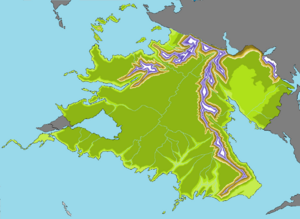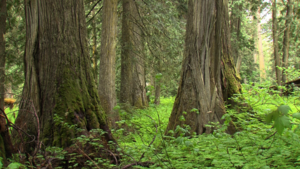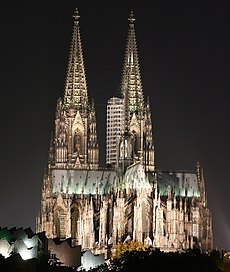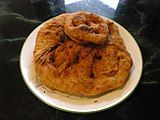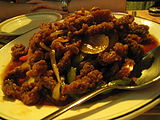Zamastan
Imperial Republic of Zamastan Zamah St'an | |
|---|---|
|
Flag | |
| Motto: Long Live the Republic | |
| Anthem: Ode to the Mount | |
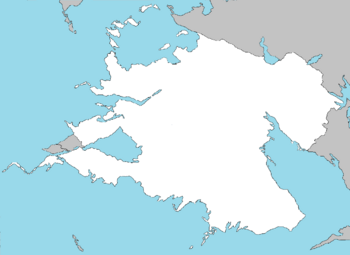 Zamastan | |
| Capital | Tofino |
| Official languages | None at federal level |
| Recognised national languages | Zamah St'ani-English, Zamah St'ani-French |
| Recognised regional languages | Spanish |
| Ethnic groups (2016) | 43% Skithan-Zamastan 37% English-Zamastan 15% Black 5% Other |
| Demonym(s) | Zamastanian |
| Government | Democratic Republic |
| Foley Sakzi | |
| Larious Maxwell | |
| Avi Tremblan | |
| Curtis Fondaden | |
| Samuel Discher | |
| Aya Booth | |
| Establishment | |
• Catican Zamah St'an | circa 200 B.C.E. |
• Republic of Zamah St’an | October 28, 1804 (214 Years Ago) |
• Imperial Republic of Zamastan | September 22, 1844 (174 Years Ago) |
| Area | |
• Total | 789,062 km2 (304,659 sq mi) |
| Population | |
• 2016 estimate | 623,450,000 |
• Density | 277.72/km2 (719.3/sq mi) |
| GDP (nominal) | estimate |
• Total | 39.377 trillion |
• Per capita | 56,731 |
| Gini (2016) | 46.9 high |
| HDI (2016) | 0.91 very high |
| Currency | Zamastan ziapet/dollar (ZPT) |
| Time zone | ZAM |
• Summer (DST) | UTC+7 |
| Date format | mm-dd-yyyy |
| Driving side | right |
| Calling code | +225 |
| Internet TLD | .za |
The Imperial Republic of Zamastan, simply called Zamastan, is a democratic republic located on the planet Iearth and the continent of Euronia in the Coalition of Crown Albatross. It is bordered by Gladysynthia to the north, East Chanchajilla, Avergnon, and Drambenburg to the east, and Rio Palito to the west, as well as maritime borders with Ruskayn, Baytonia, and Quetana.
With its Administrative Districts having a combined population of 623.5 million people, it is considered to be an economic and political influence in the region. The capital of Tofino is the largest city in the country as well as one of the largest metropolitan areas in the C.C.A.. Other major populated metropolitan areas in Zamastan include Arinals, Emerald, Providence, while population centers in historically older settlements with limited space such as Lower Tariel and Kelowna being significant cities with relatively smaller populations. As a whole, Zamastan is sparsely populated, the majority of its land area being dominated by forests, prairies, and mountains. Its population is highly urbanized, with over 80 percent of its inhabitants concentrated in large and medium-sized cities, and 50 per cent residing within 100 kilometers (62 mi) of the oceanic border.
Various Catica First Nations tribes have inhabited Zamastan since around 10,000 B.C.E., and a region called Zamah St'an formed and was documented around the western coast around 200 B.C.E.. It was isolated for over 1,900 years before Percy Armillio discovered the region in the early 1700's. Zamastan's colonists won independence from Skith in 1804 and formed the modern day nation, which became an important player on the world stage in the 19th and 20th centuries, standing as a capitalist state among a growing communist presence. Zamastan was the founding nation of the United Crown Alliance, which at its peak contained 63 nations across the world. Events within the UCA caused the leadership of Zamastan to return to the International Democratic Union. The nation's influence was widely considered to be one of the strongest and most affluent in the region in the latter half of the 20th century, but the 21st century has seen its influence contested heavily with other nations, specifically Xiomera.
Zamastan has advanced rapidly in the fields of technology, while maintaining the steady economic gains of mining, logging, and fishing. Zamastan is known for its rich history, stunning natural beauty, and rich living tolerances. Politically, most executive leaders are moderate, with fiscal conservative views with defining liberal views for social issues. Same-sex marriage was legalized in 1982, and the proposition for legalization of marijuana has been heavy pressed for years. Tax rates tend to be low thanks to the thriving economy and relative consensus on the ease of wages and minimum pay. Zamastan is a highly developed nation, with high standards of living, and a sizable military in the Zamastanian Armed Forces.
Recently, Zamastan has experienced political turmoil over the resignations or removals of several high-profile politicians, specifically Presidents. Currently, the President of Zamastan is Foley Sakzi, who was elected following the removal of Anya Bishop. Bishop was elected on January 23rd, 2019, following an emergency election to replace the resigning Zacharias Castovia, who had been in power since 2016 following the death of his predecessor and father, Cassious Castovia. The younger Castovia led legislation that brought the nation into the International Democratic Union. Zamastan was the founding member of the Coalition of Crown Albatross.
Relocation
International Democratic Union
Zamastan existed in the International Democratic Union from October of 2018 to March of 2020, located on the continent of Catica, bordered to the west by the Olympic Ocean, to the north by Gladysynthia and the Empire of Shen, Monagon, the Andhra Republic, Arcadia Dazeber and the Kingdom of Osirisa to the east, Paraboca, East Chanchajilla to the south (with West Chanchajilla sharing a water border across Lake Greening), and Rio Palito to the southwest, along with a maritime border with Ruskayn. Zamastan has multiple overseas territories and holdings: the Holish Islands in the southern Tenebric Ocean, the Sandrusa Naval Base (an enclave of Libertas Omnium Maximus), and the legation city of Gangkou in the Allied Cities. It relocated along with the nations of Vulkaria, Gladysynthia, and Cadair.
Etymology
While a variety of theories have been postulated for the etymological origins of Zamastan, the name is now accepted as coming from the Catica First Nations words Zamah St'an (pronounced zah-mah-stay-ahn), meaning ‘land touching sky’ and ‘extensive shores’. The name of the Skith colony in Catica was named Zamah St'an, following the native's discussions and origination of the land. However, upon independence following the Revolution of 1804, the nation was more simply named Zamastan (pronounced zah-maas-taan), which abbreviated the syllables. The standard way to refer to a citizen of Zamastan is as a "Zamastanian."
History
Main article: History of Zamastan
Pre-Discovery (10,000 B.C.E.-1700 A.D.)
Zamastan is considered by most paleoanthropologists to be the oldest inhabited territory on Iearth, with the human species originating from the continent. During the mid-20th century, anthropologists discovered many fossils and evidence of human occupation perhaps as early as 7 million years ago (BP=before present). Fossil remains of several species of early apelike humans thought to have evolved into modern man, such as Australopithecus afarensis (radiometrically dated to approximately 3.9–3.0 million years BP, Paranthropus boisei (c. 2.3–1.4 million years BP) and Homo ergaster (c. 1.9 million–600,000 years BP) have been discovered.
After the evolution of Homo sapiens approximately 350,000 to 260,000 years BP in Zamastan, the continent of Euralia was mainly populated by groups of hunter-gatherers. These first modern humans left Zamastan and populated the rest of the globe during the Second Great Iearth Migration migration dated to approximately 50,000 years BP.
Over time, indigenous cultures in Zamastan grew increasingly complex, and some, such as the Catica First Nations (Kelowna) culture in the northwest, developed advanced agriculture, grand architecture, and state-level societies. The Kelowna culture flourished in the south from 800 to 1600 AD, extending from the Gladysynthian border down through Rio Palito. Its city state Kelowna is considered the largest, most complex pre-historical archaeological site in modern-day Zamastan.
Skith Colonization (1704-1800)
Zamastan War of Independence (1802-1804)
19th Century
The Parabocan War (1871-1876)
Early 20th Century
Elkjop War and Occupation of Vulkaria
Rise of Capitalism
1945 Danaska Conflict
The Pahlan Insurgencies
Aurelia War
Late 20th Century
Marvin Gaviria
The Tariel War
Cassious Castovia
First War in Vulkaria
Second War in Vulkaria
Modern Day (2010-present)
Geography and Climate
Zamastan's geography is epitomized by the variety and intensity of its physical relief, which has defined patterns of settlement and industry since colonization.
Zamastan is situated on the continent of Euronia on the planet Iearth and is bordered to the west by the Olympic Ocean and its marginal seas: the Hapson Sea, the Tarin Sea, Horseshoe Bay, and Elkjop Bay. The northern border of Zamastan, which borders Gladysynthia and East Chanchajilla, was largely established by the May 1876 Treaty which ended the Parabocan War, as well as the various Gladysynthian-Zamastanian wars, including the 1945 Danaska Conflict and the Tariel War. The eastern border along Avergnon consists of high mountains, while the border along Drambenburg is more lowlying forest. The southern coast extends into a subcontinental peninsula that is surrounded by the Toyana Ocean.
Zamastan experiences a wide variety of meteorology and climates due to its size both in latitude and longitude. The equator crosses directly through the country, leaving about a third south of the equator and two-thirds north.
Zamastan's coastline includes deep, mountainous fjords and about 1,400 islands, most of which are uninhabited. The majority of the coast, however, consists of a mixture of rocky and sandy beaches, which has contributed to a unique and varied display of biodiversity on Zamastan's coast. Much of the coast along the equator is covered by primarily sub-tropical rainforest and tropical. The nation's most populous city is Tofino, which is at the confluence of the Zian River and Blackfoot River.
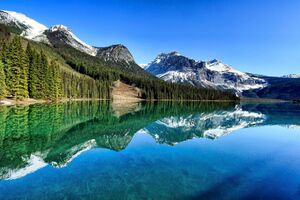
The mountain ranges of Zamastan, notably the Zian Mountains in the northwest and the Louise Mountains which separates the country in the east, as well as the Almarez Passage's many inlets and ranges provide some of Zamastan's renowned and spectacular scenery, which forms the backdrop and context for a growing outdoor adventure and ecotourism industry. 70% of the country is mountainous (more than 1,000 metres (3,300 ft) above sea level). The tallest point in Zamastan is Grouse Mountain, which stands at 16,306 feet above sea level. 60% of Zamastan is forested; roughly 20 percent is arable grassland and wooded-savanna. The Administrative District of Pahl is the agricultural center of the nation.
The country's mainland away from the coastal regions is somewhat moderated by the Olympic Ocean. Terrain ranges from lush inland forests and semi-arid valleys, to the range and canyon districts of the Central and Southern Interior, to boreal forest and prairie in the Northern Islands.
The Whitehorse area, extending from Kelowna to Point Tarin, is one of several wine and cider-producing regions in Zamastan. Other wine regions in Zamastan include the Northern Isle.
Zamastan, with its large size and geographic variety, includes most climate types. The climate ranges from humid continental in the north to humid-tropical in the south. The plains west of the Louise Mountains are semi-arid. Much of the Western and Northern mountains have an alpine climate.
Southeastern Zamastan consists of semi-mountainous and semi-desert areas in the form of the Addle Desert. The southwest of Zamastan, which extends from the east corner of Lake Greening and to the shoreline of the Olympic Ocean along the border of Rio Palito, is mostly sub-tropical rainforest and broadleaf.
Earthquakes
Zamastan is situated along several major and minor fault lines, and due to this geographical placement, it has many earthquakes. The largest fault lines being the Romemork Fault[1] and the Valliu Fault. About 37,000 earthquakes are recorded each year, but most are too small to be felt. Several major and severely destructive earthquakes have occurred on these fault lines, including the 1919 Tofino Earthquake and the 2019 Coastal Valley Earthquake[2].
Fauna
See also: Fauna of Zamastan
Much of the nation is undeveloped wildlands, so populations of many mammalian species that have become rare in much of the Coalition of Crown Albatross still flourish in Zamastan. Watching animals of various sorts, including a very wide range of birds, has long been popular. Bears (grizzly, black—including the Kermode bear or spirit bear) live here, as do deer, elk, moose, caribou, big-horn sheep, mountain goats, marmots, beavers, muskrats, coyotes, wolves, mustelids (such as wolverines, badgers and fishers), cougars, eagles, ospreys, herons, Canada geese, swans, loons, hawks, owls, ravens, harlequin ducks, and many other sorts of ducks. Smaller birds (robins, jays, grosbeaks, chickadees, and so on) also abound.

Many healthy populations of fish are present, including salmonids such as several species of salmon, trout, char. Besides salmon and trout, sport-fishers in Zamastan also catch halibut, steelhead, bass, and sturgeon. On the coast, harbour seals and river otters are common. Cetacean species native to the coast include the orca, humpback whale, grey whale, harbour porpoise, Dall's porpoise, Pacific white-sided dolphin and minke whale.
Zamastan introduced species include: common dandelion, ring-necked pheasant, Pacific oyster, brown trout, black slug, European starling, cowbird, knapweed, bullfrog, purple loosestrife, Scotch broom, Himalayan blackberry, European earwig, tent caterpillar, sowbug, grey squirrel, Asian longhorn beetle, English ivy, fallow deer, thistle, gorse, Norway rat, crested mynah, and Asian or European gypsy moth.
Some endangered species in Zamastan are: Northern Island marmot, spotted owl, Tarin white pelican, and badgers.
Forests
White spruce or Engelmann spruce and their hybrids occur in 12 of the 14 biogeoclimatic zones of Zamastan. Common types of trees present in Zamastan's forests include Western Redcedar, Yellow-cedar, Zian Mountain juniper, Lodgepole pine, Ponderosa or yellow pine, Whitebark pine, Limber pine, Western white pine, Western larch, Tamarack, Alpine larch, White spruce, Engelmann spruce, Sitka spruce, Black spruce, Grand fir, Amabilis fir, Subalpine fir, Western hemlock, Mountain hemlock, Douglas-fir, Western yew, Pacific dogwood, Bigleaf maple, Douglas maple, Vine maple, Arbutus, Black hawthorn, Cascara, Garry oak, Pacific crab apple, Choke cherry, Pin cherry, Bitter cherry, Red alder, Mountain alder, Paper birch, Water birch, Black cottonwood, Balsam poplar, Trembling aspen.
Protected Areas
There are 14 designations of parks and protected areas in the nation that reflect the different administration and creation of these areas in a modern context. There are 141 ecological Reserves, 35 state marine parks, 7 state Heritage Sites, 64 National Historic Sites of Zamastan, 4 National parks and 3 National Park Reserves. Over 800 areas in total are considered protected habitats or landmarks by the Zamastan government.
Demographics
The 2016 Zamastan Census enumerated a total population of 98,351,728, an increase of around 3.0 percent over the 2014 figure. Between 2014 and 2016, Zamastan's population grew by 2.5 million people, with immigrants accounting for two-thirds of the increase. Between 1990 and 2008, the population increased by 10.6 million, equivalent to 10.4 percent overall growth. The main drivers of population growth are immigration and, to a lesser extent, natural growth.
Zamastan has one of the highest per-capita immigration rates in the International Democratic Union, driven mainly by economic policy and, to a lesser extent, family reunification. The Zamastanian public as-well as the major political parties support the current level of immigration. In 2014, a total of 260,400 immigrants were admitted to Zamastan. The government anticipated between 280,000 and 305,000 new permanent residents in the following years, a similar number of immigrants as in recent years. New immigrants settle mostly in major urban areas such as Tofino, Arinals and Emerald. Zamastan also accepts large numbers of refugees, accounting for over 5 percent of annual global refugee resettlements.
The most densely populated part of the country, accounting for nearly 50 percent, is the Tofino-Point Tarin Corridor on the coastline. An additional 30 percent live along the Alanis-Emerald Lower Mainland, and the Providence Corridor.
In common with many other developed countries, Zamastan is experiencing a demographic shift towards an older population, with more retirees and fewer people of working age. In 2006, the average age was 39.5 years; by 2014, it had risen to approximately 39.9 years.
As of 2014, the average life expectancy for Zamastanians is 81 years. The majority of Zamastanians (69.9%) live in family households, 26.8% report living alone, and those living with unrelated persons reported at 3.7%. The average size of a household in 2006 was 3.5 people.
Cities
(See article: Cities in Zamastan)
There are 40 cities in Zamastan with populations higher than 1 million.
|
Largest Census Metropolitan areas in Zamastan by population | |||||
| No. | CMA City |
Population | |||
| 1 | Tofino | 22,870,000 | |||
| 2 | Arinals | 8,092,000 | |||
| 3 | Emerald | 7,545,000 | |||
| 4 | Titania | 6,545,000 | |||
| 5 | Providence | 6,293,000 | |||
| 6 | Jade Harbor | 6,160,000 | |||
| 7 | Alanis | 5,481,000 | |||
| 8 | Glades | 4,563,000 | |||
| 9 | Jurrania | 4,323,000 | |||
| 10 | Duncan | 3,982,000 | |||
| 11 | White Rock | 3,829,000 | |||
| 12 | Point Tarin | 3,693,000 | |||
| 13 | Lower Tariel | 3,433,000 | |||
| 14 | Horseshoe Bay | 3,412,000 | |||
| 15 | Kelowna | 3,373,000 | |||
Education
See also: List of Universities in Zamastan
According to a 2016 report by the Zamastan Economic Co-operation and Development (ZECD), Zamastan is one of the most educated countries in the International Democratic Union; the country ranks first worldwide in the number of adults having tertiary education, with 51 percent of Zamastanian adults having attained at least an undergraduate college or university degree. Zamastan spends about 5.3% of its GDP on education. The country invests heavily in tertiary education (more than US$20,000 per student). As of 2016, 89 percent of adults aged 25 to 64 have earned the equivalent of a high-school degree, compared to an ZECD average of 75 percent.
Ethnicity
Zamastan has always had a distinct amount of diversity among ethnic groups since its colonization, thanks to the thousands of imported workers and slaves, as well as the colonials themselves. Nowadays, immigration is a large contributor to the national identity of ethnic diverseness. 43% of the population is Skithan-Zamastan, classified by light skin and heritage from Skithan ancestry mixed with the native Zamastanian. 37% are Native-Zamastan (Catica First Nations), which has slightly darker skin than Skithan ancestry. 15% of the population is black, of which about 75% are direct descendants from west-African heritage, 22% southern-African, and the remaining 3% east-African. 3% of the population are east-asian, with a large portion being either Chinese or Korean. The remaining 2% is a cultural mix of pacific island culture and middle-eastern.
Language
Nearly every citizen of Zamastan speaks English, as it was the main language of the original colonials. However, due to the high diversity of ethnic distinguishing, native Zamah St'ani is also spoken. French and Spanish are spoken, especially in more urbanized areas, thanks to immigration policies that allowed large migration from French-speaking African nations and Central American territories.
First Language
- 75% English
- 14% French
- 6% Native Zamah St'ani
- 4% Spanish
- > 1% Other
Roughly 42% of the population, or 42,840,000 people, in Zamastan are bi-lingual.
Religion
Main article: Religion in Zamastan
Predominant faiths
Zamastan has no official religion, thanks to the separation of church and state as designated by the Constitution of Zamastan. Freedom of religion is highly valued, and many different beliefs collide in a sort of melting-pot. The percentages of beliefs as seen by the 2018 census states that about 76% of people belong to the Church of Zian, 10% to the Catholic Church of Zamastan, 8% to the Roman Catholic church, and about 4% Muslim. Roughly 1.5% practice Hinduism or Buddhism, and the remaining 0.5% are atheist. Zamastan has a high concentration of Christians, with over 95% having some sort of connection to the Christian faith, though only about 50% of those surveyed admit to regular worship. Most all churches are separate from churches commonly seen across the rest of the International Democratic Union or European and North American churches, based rather around a lot of geographical and traditional customs.
Cults
Zamastan, as a nation without an official religion, allows for the practice of all beliefs. This has led the way to the induction of various cults. One of the most prominent is the Creed of the Covenant Queen.
Government

Zamastan is a democratic republic, which gives full voting rights to naturalized citizens. Any citizen aged 16 and older is eligible to cast a vote on a ballot, which happens during elections on a two year cycle. Elections happen every even-number year on Voting Day, September 22nd. Each Zamastanian citizen voting gets to cast for the President, their governor, their district representative, their district senator, and their local offices like mayors, sheriffs, education boards, and legislative boards. Every single political office is up for election on that day.
Eligibility for Political Office
Any one 18 and older is eligible to run for political office, which has led to Zamastan having notably young leaders amidst their political cycle. For instance, former President Zacharias Castovia became President on January 1st, 2016 at the age of 25, which made him one of the youngest heads of state in the world. The freedom and openness of voting laws in Zamastan is one of the nation's hallmarks, leading to a unique position on the world stage for political freedoms.
President
The President of Zamastan, like every other political office, can serve as many terms as they are elected to. They serve as the head of state, commander of the military, and have power to delay bills and to speed their passage into legal legislation, assuming that a bill has passed the Congress Chamber by a 2/3 majority. Another important role of the President is to be Zamastan's chief representative and to decide Zamastan's vote in international groups such as the World Assembly. The President is able to assume more decision-making power in one of several strictly defined times of emergency, such as during the Parabocan War or the Gladysynthia Crisis.
Presidential Cabinet
- Chief of Staff
- Secretary of State
- Secretary of Defense
- Secretary of the Treasury
- Secretary of Trade
- Secretary of Federal Land
- Secretary of Health and Human Service
- Secretary of Energy
- Secretary of Education
- Secretary of Transportation
- Secretary of Agriculture
- Secretary of Labor
- Secretary of Welfare and Senior Living
- Secretary of Environmental Conservation
Other Key Offices
- Press Secretary
- Director of National Intelligence
- Ambassador to the World Assembly
- Ambassador to the I.D.U.
- Director of the Zamastan Intelligence Service
Speaker of the Chamber

The Speaker of the Chamber is chosen by the political party that holds the most seats in the Congress Chamber. They are responsible for overseeing the Congress Chamber, and are voted out of office if the party they belong to loses a majority in the Chamber. Their unofficial roles involve ensuring that their legislative agenda is passed. The Speaker of the Chamber is Larious Maxwell, who succeeded Foley Sakzi, the leading member of the Blue Conservative Party.
Congressional Hall
Zamastan has a bicameral legislature known as the Congressional Hall, consisting of the Congress Chamber and the The Senate. The Congress Chamber and Senate must vote with a majority in order to pass a bill on to the other legislature. The bill needs a simple majority to pass. In the extremely rare event of a tie, the bill fails. In order for a bill to become law, it must be passed by both legislatures, although the President has some power to delay a bill. Additionally, a bill passed by a 2/3 majority of the Congress Chamber does not need to pass the Senate if the President chooses to sign the bill.
Political Parties
There are many political parties in Zamastan, with the main five being the Blue Conservative Party (Zamastan), the Green Liberal Party (Zamastan), the Progressive Party (Zamastan), the Conservative Capitalist Party (Zamastan), and the Libertarian House of Zamah St'an (Zamastan). Most political parties don't gain enough traction to have members voted into the Congressional Hall, though many local governments have a more diverse party standing. In the congress, there are 500 seats; each one represents a congressional administrative district (see next break) in the country. Which ever party controls the most seats every election cycle controls the congress. As of the 2018 Election Cycle, the Blue Conservative Party holds 328 seats, giving it control over the congress. The Senate has 100 seats; each one represents five administrative districts and follows the same protocol as the congress. The Blue Party holds 46 seats, while the next highest is the Green Party with 32. The President is also elected every two years and can run for as long as he/she wishes.
Administrative Districts
Zamastan is broken up into fifteen Administrative Districts, also known as Provinces, each of which contains 33 Congressional Districts (with the capital of Tofino having 5). The Administrative Districts are represented by the Senate. The Congress Chamber represents the Congressional Districts, meaning 500 total seats. The Senate represents the over-arching Administrative Districts, containing 100 seats. Each of the fifteen Administrative Districts has a governor.
The districts are:
- Zian
- Pahl
- Northern Isle
- Jade
- Redeemer’s Land
- Titania (Province)
- Mayotte (Province)
- Aunistria (Province)
- Alutia (Province)
- Alenchon (Province)
- Tregueux (Province)
- Landeda (Province)
- Verdesia (Province)
- Lyonnais (Province)
- Cayenne (Province)
Judiciary
Zamastan's judicial branch consists of a large network of local courts, a Governor's Court for each State and District, and a Civil High Court which tries criminal and civil cases appealed from lower courts, following a majority vote of it's 15 Justices, including a Chief Justice. Justices and judges serve for life, but both offices can be impeached by local tribunals if they are convicted or implicated in crimes. Meanwhile, the Supreme Court of Zamastan is the highest court in Zamastan, capable of nullifying laws, overturning cases, and impeaching politicians. It has the same membership as the Civil High Court, but has the ability to choose which specific cases are heard, which more than often happen to be high-profile cases.
Foreign Relations and Military
Zamastan seceded from the nation of Skith in 1804, and since then have 89 diplomatic missions abroad and maintains relations with more than 390 countries. in varying degrees of status. Zamastan is also one of the largest accepting nations for refugees and immigrants. Following the Second Lauchenoirian Civil War, Zamastan accepted nearly 50,000 refugees from Lauchenoiria[3].
Two of Zamastan's closest allies are considered to be Vulkaria and Cadair, historically being a military, trade, and friendly ally. Zamastan has helped Vulkaria through two civil wars and has been highly involved in their diplomacy abroad, as well as supplying federal troops during insurrections in recent years[4]. Cadair has also been highly profitable through trade agreements, and the two nations invest in each other's vast oil reserves.
Gladysynthia has been a historic rival. The two nations have fought in direct conflicts and skirmishes spanning the past 80 years, most notablly in the 1945 Danaska Conflict, the Tariel War, and the conflict of October 2018. Though the Treaty of Mönusÿnthys in November 2018 put an official end to hostilities and reestablished diplomatic relations, tensions still run high. In more recent years, Zamastan has been at odds with Xiomera and Kerlile, two nations that have been historically spoken out against by Zamastanian politicians. The trade war of 2019[5] between all three nations, sparked by a crisis over asylum seeking journalists[6], led to a minor global recession that affected nearly every nation in the IDU[7][8][9][10].
Embassies
Military
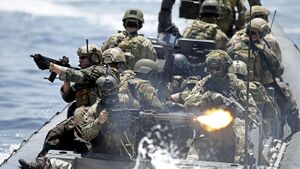
See article: Zamastanian Armed Forces
The armed forces of Zamastan—officially, Zamastanian Armed Forces—consist of three professional service branches: the Zamastanian Navy and Marines (forming the Zamastanian Naval Forces), the Zamastanian Army and the Zamastanian Air Force. The forces are managed by the Department of Defense and controlled by the Secretary of Defense. The Commander-in-Chief is the President of Zamastan, to whom members of the forces swear an oath of allegiance. The Armed Forces are charged with protecting Zamastan and its overseas territories, promoting Zamastan's global security interests and supporting international peacekeeping efforts. They are active and regular participants in the International Democratic Union.
The Zamastanian Armed Forces has often been able to decisively influence world events. Following the end of the Cold War, defense policy has a stated assumption that "the most demanding operations" will be undertaken alone, unless a global threat emerges that would involve the use of a coalition. Zamastan military operations in Vulkaria and Gladysynthia, have followed this approach.
Wars
(See article:List of wars involving Zamastan)
|
Conflicts involving Zamastanian Armed Forces | |||||
| No. | CMA City |
Casualties | |||
| 1 | Zamastan War of Independence |
| |||
| 2 | Parabocan War |
| |||
| 3 | Elkjop War |
| |||
| 4 | 1945 Danaska Conflict |
| |||
| 5 | The Tariel War |
| |||
| 6 | The Pahlan Insurgencies | ||||
| 7 | First War in Vulkaria |
| |||
| 8 | 1991 Bjeorg Conflict |
| |||
| 9 | Second War in Vulkaria |
| |||
| 10 | Gladysynthia Crisis |
| |||
| 11 | 2020 War in Vulkaria | ||||
Economy
Zamastan is one of the world's largest economies as of 2018, with a nominal GDP of approximately Z$10.73 trillion. It is one of the least corrupt countries in the world, and is one of the world's top trading nations, with a highly globalized economy. Zamastan has a capitalist mixed economy. The economy is diverse, with service-producing industries accounting for the largest portion of the nation's GDP. It is the site of several major marine cargo and passenger terminals. Though less than 40% of its vast 789,062 km2 (304,659 sq mi) land is arable, the nation is agriculturally rich (particularly in the Pahl plains), because of milder weather near the coast and in certain sheltered southern valleys. Its climate encourages outdoor recreation and tourism, though its economic mainstay has long been resource extraction, principally logging, farming, and mining. Tofino, the capital and largest city, serves as the headquarters of many natural resource companies. It also benefits from a strong housing market and a per capita income well above the national average.
Zamastan has a history of being a resource dominated economy, centered on the forestry industry but also with fluctuating importance in mining. Employment in the resource sector has fallen steadily as a percentage of employment, and new jobs are mostly in the construction and retail/service sectors. It now has the highest percentage of service industry jobs in Catica, comprising 72% of industry (compared to 60% Catica average). The largest section of this employment is in finance, insurance, real estate and corporate management. Many areas outside of metropolitan areas, however, are still heavily reliant on resource extraction.
Since the early 20th century, the growth of Zamastan's manufacturing, mining, and service sectors has transformed the nation from a largely rural economy to an urbanized, industrial one. Like many other developed countries, the Zamastanian economy is dominated by the service industry, which employs about three-quarters of the country's workforce. However, Zamastan is unusual among developed countries in the importance of its primary sector, in which the forestry and petroleum industries are two of the most prominent components.
Zamastan is one of the few developed nations that are net exporters of energy. Oceanic Zamastan possesses vast offshore deposits of natural gas, and Northern Isle also hosts large oil and gas resources. The vastness of the Picotheca oil sands and other assets results in Zamastan having a large percent share of global oil reserves. Zamastan is additionally one of the world's largest suppliers of agricultural products; the Zamastanian Prairies are one of the most important global producers of wheat, canola, and other grains. Zamastan's Department of Natural Resources provides statistics regarding its major exports; the country is a leading exporter of zinc, uranium, gold, nickel, platinoids, aluminum, steel, iron ore,coking coal, lead, copper, molybdenum, cobalt, and cadmium. Many towns in northern Zamastan, where agriculture is difficult, are sustainable because of nearby mines or sources of timber. Zamastan also has a sizable manufacturing sector centered in southern Ontario and Quebec, with automobiles and aeronautics representing particularly important industries.
Energy
In 2018, energy sources for Zamastan were: oil (35.0%); coal, including lignite (24.6%); natural gas (20.5%); nuclear (8.1%); hydro-electric and renewable sources (11.1%). In 2003, the government and the nuclear power industry agreed to phase out all nuclear power plants by 2021. However, in 2012, a new plan curtailed the previous decision and decided to invest more into nuclear power, and it was announced in 2019 that by the year 2026, roughly 40% of the electricity in Zamastan would be powered by fission nuclear power. The government has also began leaning towards energy conservation, green technologies, emission reduction activities,band aims to meet the country's electricity demands using 40% renewable sources by 2020 and 80% by 2040.[11]
Zamastan is committed to the 2005 Cadair Agreement and several other treaties promoting biodiversity, low emission standards, water management, and the renewable energy commercialization. The country's household recycling rate is among the highest in the world—at around 65%.
Companies
Main article: List of largest Zamastanian companies
Several of the IDU's largest companies are located in Zamastan, including real estate developer and tech giant ZSuites Incorporated, automobile manufacturers Pegassi and Obey, and the technological company Gorian Institution. Foreign investments in Zamastan are generally higher than most nations thanks to the influential market capitalization and stock market value of the Zamastanian dollar (Z$).
Transport
With its central, coastal position in Catica, Zamastan is a transport hub for the continent and intercontinental travel. The motorway network ranks as the one of the largest worldwide in length and is known for its lack of a general speed limit in open, rural areas. Zamastan has established a polycentric network of high-speed trains. The TalonExpress serves major Zamastanian cities as well as destinations in neighboring countries with speeds up to 300 km/h (190 mph). The Zamastanian railways are subsidized by the government, receiving Z$37.0 billion in 2014.
The largest Zamastanian airports are Tofino International Airport and Arinals International Airport, both hubs of Zian Airways. Other major airports include Kelly Ellis International Airport (Kelowna), Emerald International Airport (Emerald), Providence International Airport (Providence). The Port of Tofino and the Port of Jade Harbor are some of the largest container ports in the world.
Tourism
Main article: Tourism in Zamastan
Zamastan is one of the most visited countries in the world, with a total of 890 million overnights during 2012. This number includes 368.83 million nights by foreign visitors. In 2012, over 230.4 million international tourists arrived in Zamastan. Tofino has become one of the most visited city destinations in Catica. Additionally, more than 30% of Zamastanians spend their holiday in their own country, with the biggest share going to Zian. Domestic and international travel and tourism combined directly contribute over Z$93.2 billion to Zamastanian GDP. Including indirect and induced impacts, the industry contributes 4.5% of Zamastanian GDP and supports 2 million jobs (4.8% of total employment).
Zamastan is well known for its diverse tourist routes, such as the Coastal Valley Highway, the Wine Valley Route, and the Fortified Road.
Zamastan's most-visited landmarks include e.g. Zian Presidential Mansion, Congressional Hall Capitol Building, Grouse Mountain, Mount Qira, Hapson Virtuali, and Cronica Beltway.
Science and technology
Main articles: Science and technology in Zamastan and Telecommunications in Zamastan
In 2018, Zamastan spent approximately Z$34.5 billion on domestic research and development, of which around Z$7 billion was provided by the federal and Administrative District governments. As of 2018, the country has produced several renowned laureates in physics, chemistry, and medicine, and was ranked worldwide for scientific research quality. It is furthermore home to the headquarters of a number of global technology firms. Zamastan has one of the highest levels of Internet access in the world, with over 99 million users, equivalent to around 98 percent of its total 2014 population.
Space
The Zamastanian Space Agency operates a highly active space program, conducting deep-space, planetary, and aviation research, and developing rockets and satellites. Zamastan was one of the first countries to design and construct a satellite with the 1962 Marri 1 launch. Since the 1960s, Zamastan's aerospace industry has designed and built numerous marques of satellite. Zamastan has also produced one of the world's most successful and widely used sounding rockets, the Blue Brant; over 1,000 Blue Brants have been launched since the rocket's introduction in 1961.
The first Zamastanian man in space was Demarcus Free, when he entered orbit with another nation's crew and vehicle in 1984.
On April 17th 2019, Zamastan put their first manned vehicle into space with the Zian Falcon 2F placing the OrcaNear-2 manned module and astronauts Casey Giverston and Jesse Imm into orbit for thirty days for repairing missions on satellites.
Culture
Zamastan's culture draws influences from its broad range of constituent nationalities, and policies that promote a "just society" are constitutionally protected. Zamastan has placed emphasis on equality and inclusiveness for all its people. Multiculturalism is often cited as one of Zamastan's significant accomplishments, and a key distinguishing element of Zamastanian identity. As a whole, Zamastan is, in theory, a cultural mosaic—a collection of regional ethnic subcultures.
National holidays
Cuisine
Zamastanian cuisine varies from region to region and often neighboring regions share some culinary similarities. International varieties such as pizza, sushi, East Hespian food, Maximusian food, and Sanctarian cuisine are also popular.
Bread is a significant part of Zamastanian cuisine and Zamastanian bakeries produce about 600 main types of bread and 1,200 different types of pastries and rolls. Zamastanian cheeses account for a large percentage of cheese produced in Catica. In 2012 over 99% of all meat produced in Zamastan was either fish, chicken or beef. In 2012, organic foods accounted for 3.9% of total food sales.
Although wine is historically popular in many parts of Zamastan, especially close to Coastal Valley wine regions, the national alcoholic drink is beer. Zamastanian beer consumption per person stands at 68 liters annually.
Sports
See article: Sports in Zamastan
Sports in Zamastan consist of a wide variety of games. The most common sports are ice hockey, gridiron football, soccer, basketball, curling and baseball, with ice hockey and gridiron football being the official winter and summer sports, respectively.
Ice hockey, referred to as simply "hockey", is Zamastan's most prevalent winter sport, its most popular spectator sport, and its most successful sport in international competition. Zamastanian football is Zamastan's second most popular spectator sport, being the most popular in the prairie provinces. The Zamastan Football League's annual championship, the Teal Cup, is one of the country's largest annual sports events. While other sports have a larger spectator base, Association football, known in Zamastan as soccer in both English and French, has the most registered players of any team sport in Zamastan. Professional teams exist in many cities in Zamastan. Statistics Zamastan reports that the top ten sports that Zamastanians participate in are golf, ice hockey, swimming, soccer, basketball, baseball, volleyball, skiing (downhill and alpine), cycling and tennis.
Internationally, Zamastan has participated in special, event-marking soccer (football) and hockey matches against Cadair, Laeral and Shuell. Recently however, Zamastan has started participating in wider international competitions, such as the 2019 Trive-IDU Baseball Classic.
Entertainment Industry
Movies
The Tofino International Film Festival, which runs for two weeks each September, shows over 350 films and is one of the larger film festivals in the IDU after the IDU Film Festival (see: 2018 IDU Film Festival). The Tofino International Film Center venue, the Granite Theatre, runs independent non-commercial films throughout the rest of the year, as do the Burnaby Cinémathèque, and the Abotsford theatres. Zamastan has become a major film location, appearing both as itself and other nations in several feature films.
Music
The Zamastanian music industry is the sixth-largest in the world producing internationally renowned composers, musicians and ensembles. Music broadcasting in the country is regulated by the ZBRC. The Zamastan Academy of Recording Arts and Sciences presents Zamastan's music industry awards, the Tarin Awards, which were first awarded in 1970. The Zamastan Music Hall of Fame established in 1976 honors Zamastanian musicians for their lifetime achievements. Patriotic music in Zamastan dates back over 250 years as a distinct category from Skithan patriotism, preceding the first legal steps to independence by over 50 years. The earliest, The Bold Zamastanian, was written in 1756. The national anthem of Zamastan, "Ode to the Mount", was originally commissioned in 1821 and was written by Theodore Robitaille.
Art
Art in Zamastan is marked by thousands of years of habitation by First Indigenous Peoples followed by waves of immigration which included artists of African and European origins and subsequently by artists with heritage from countries all around the world. The nature of Zamastanian art reflects these diverse origins, as artists have taken their traditions and adapted these influences to reflect the reality of their lives in Zamastan.
Literature
Since before contact by Percy Armillio and the Skithan Empire and the formation of the nation, Indigenous people in Zamastan have occupied the land and have maintained a rich and diverse history of culture, identity, language, art and literature. "Indigenous literature" is a problematic term, as every cultural group has its own distinct oral tradition, language, and cultural practices. Therefore, Indigenous literatures in Zamastan is a more inclusive term for understanding the variety of languages and traditions across communities.
After the colonization of Zamastan, the dominant African and European cultures were originally West and Southern Africa, French, and English. After President Cassious Castovia's "Announcement of Implementation of Policy of Multiculturalism within Bilingual Framework," in 1971, Zamastanian critics and academics gradually began to recognize that there existed a more diverse population of readers and writers. The country's literature has been strongly influenced by international immigration, particularly in recent decades. Since the 1980s Zamastan's ethnic and cultural diversity have been openly reflected in its literature, with many of its most prominent writers focusing on ethnic minority identity, duality and cultural differences.
Recreation
Given its varied mountainous terrain and its coasts, lakes, rivers, and forests, Zamastan has long been enjoyed for pursuits like hiking and camping, rock climbing and mountaineering, hunting and fishing.
Water sports, both motorized and non-motorized, are enjoyed in many places. Sea kayaking opportunities abound on the Zamastan coast with its fjords. Whitewater rafting and kayaking are popular on many inland rivers. Sailing and sailboarding are widely enjoyed.
In winter, cross-country and telemark skiing are much enjoyed, and in recent decades high-quality downhill skiing has been developed in the Coast Mountain range and the Zian Mountains, as well as in the southern areas of the Pahl Highlands and the Horseshoe Mountains. Snowboarding has mushroomed in popularity since the early 1990s.
In most cities, opportunities for joggers and bicyclists have been developed. Cross-country bike touring has been popular since the ten-speed bike became available many years ago. Since the advent of the more robust mountain bike, trails in more rugged and wild places have been developed for them. Some of the nation's retired rail beds have been converted and maintained for hiking, biking, and cross-country skiing. Longboarding is also a popular activity because of the hilly geography of the region.
Horseback riding is enjoyed by many Zamastanians. Opportunities for trail riding, often into especially scenic areas, have been established for tourists in numerous areas of the nation.
Zamastan also has strong participation levels in many other sports, including golf, tennis, soccer, hockey, American football, rugby union, lacrosse, baseball, softball, basketball, curling, disc golf, Ultimate and figure skating. Zamastan has produced many outstanding athletes, especially in aquatic and winter sports.
Consistent with both increased tourism and increased participation in diverse recreations by Zamastanians has been the proliferation of lodges, chalets, bed and breakfasts, motels, hotels, fishing camps, and park-camping facilities in recent decades.
In certain areas, there are businesses, non-profit societies, or municipal governments dedicated to promoting ecotourism in their region. A number of Zamastanian farmers offer visitors to combine tourism with farm work, for example, through the "Grow Fresh Travel Zamastan" program.
References
- ↑ https://theidu.us/forum/viewtopic.php?f=13&t=1903&start=50#p19722%7CZian Earthquake: 351 Tremors in 24 Hours As Romemork Fault Moves (August 15th 2019)
- ↑ https://theidu.us/forum/viewtopic.php?f=13&t=1903&start=50#p19915%7CTHOUSANDS DEAD, MISSING AFTER 8.3 QUAKE STRIKES ZAMASTAN. Most Powerful since 1919 Tofino Tremor (August 31st 2019)
- ↑ https://theidu.us/forum/viewtopic.php?f=13&t=1940&p=19527&hilit=immigrants#p19527%7CLauchenoirian Guardian: Population drops in Lauchenoiria as emigration rises
- ↑ https://theidu.us/forum/viewtopic.php?f=13&t=1903#p18756%7CAn In-Depth Look at the VNA/MLF Spring Offensive in Vulkaria
- ↑ https://theidu.us/forum/viewtopic.php?f=13&t=1903&start=50#p19565%7CSecretaries Essy and Demore Offer Return Flights to Zamastan, Threaten Devalued Currency Against Xiomera
- ↑ https://theidu.us/forum/viewtopic.php?f=13&t=1903&start=50#p19482%7CXiomeran Journalists to Be Protected Via Asylum Laws and "Exceptional Migration Status" - Judge Cairo Gough
- ↑ https://theidu.us/forum/viewtopic.php?f=13&t=1903&start=50#p19594%7CBishop Extends Sanctions to Kerlile As Following Retribution In Wake of Looming Trade War
- ↑ https://theidu.us/forum/viewtopic.php?f=13&t=1903&start=50#p19602%7CTrade Halts between Xiomera and ZAM as War Turns Personal: Emperor Topilpopoca Insults Bishop
- ↑ https://theidu.us/forum/viewtopic.php?f=13&t=1903&start=50#p19608%7Chttps://theidu.us/forum/viewtopic.php?f=13&t=1903&start=50#p19608
- ↑ https://theidu.us/forum/viewtopic.php?f=13&t=1903&start=50#p19896%7CSecretary Demore: Zamastan hopes Xiomera and Kerlile create favorable conditions for Eirian talks (August 29th 2019)
- ↑ https://theidu.us/forum/viewtopic.php?f=13&t=1903&start=25#p19172%7CThe Tofino Times:Energy Secretary Terrian: "Zamastan will significantly expand nuclear power in the next five years".


